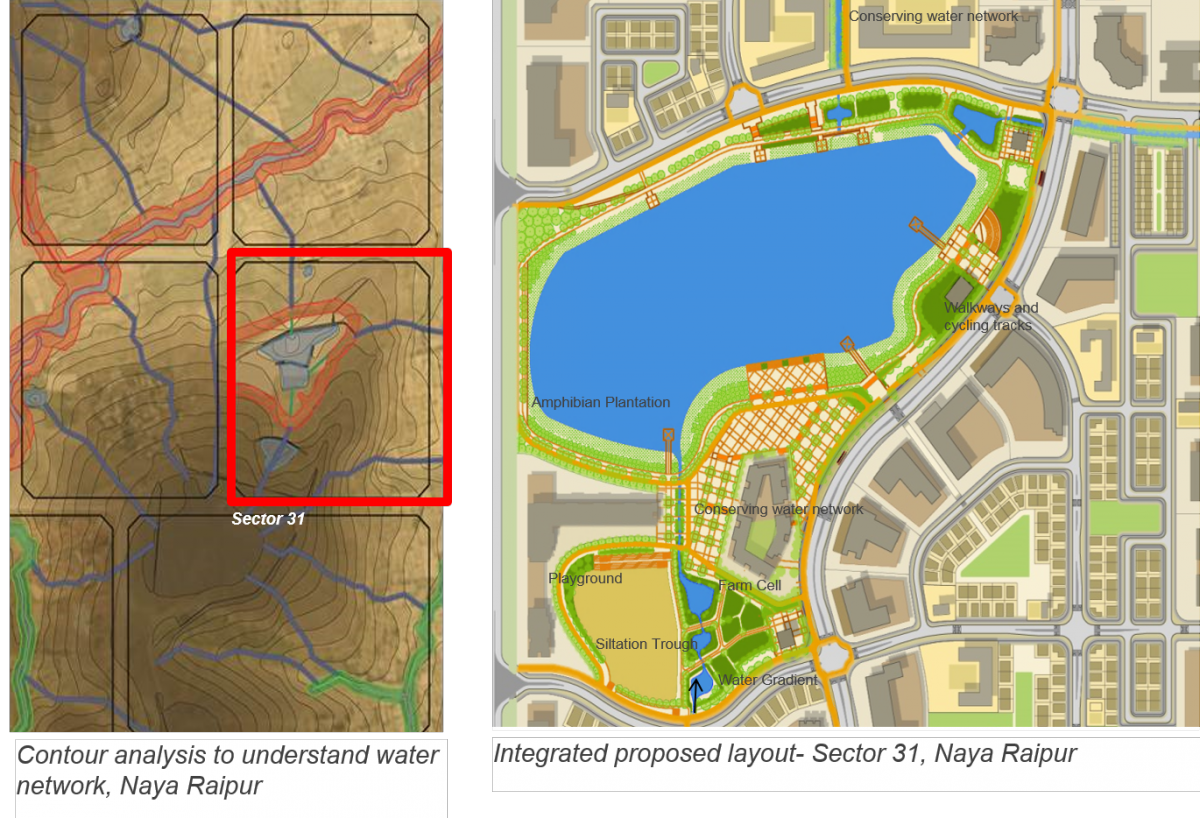Managing Water Resources With Urban Design
India is undergoing rapid urbanisation. About 600 million Indians will live in urban areas within fifteen years. Given that cities practically run on water, India must find a way to route clean, reliable water supplies to its citizens, helping meet their needs for drinking, hygiene and sanitation. The 2015 World Economic Forum identified “water supply crises” as one of the top five global risks, and as many as 3.5 billion could experience water scarcity by 2025.
Urbanisation Can Become a Serious Threat to Natural Water Resources
Often, land development and the rapid rate of development of buildings, roads and other infrastructure overlook naturally occurring water resources in an area. Encroachment on catchment areas, watershed zones, aquifers and water bodies have become a common phenomenon. This interrupts naturally forming water basins, dries-up or damages water bodies, reduces water catchments, cuts off and contaminates water sources that should be available to the people living around them, and leads to poor drainage, unnatural flooding and damaged local infrastructure.
Urban water management has five major sectors – water supply, water pollution, waste water management, sewage disposal and water scarcity. There is considerable amount of work in each of these areas in terms of documentation, design and regulations. Data on these subjects though fragmented, is mostly available at a region, state, or city level. Action plans, too, are listed as region, state, or city level action plans. The main problem with this matrix of information is that it is limited in its ability to address issues at the tertiary level, such as the conservation of non-perennial water channels at the neighbourhood level.
If the water channels in a neighbourhood that flow into larger rivers are blocked, they will dry up, and there will be large scale flooding of low lying areas, when it rains. The WRI Aqueduct Global Flood Analyser estimates that by 2030, roughly 62.2 percent of the increase in the annual urban damage in India could be driven by socio-economic change assuming that no additional flood protection is introduced. Unfortunately, these water network channels are not even identified, let alone protected.
From Theory to Practice
In 2000, Chhattisgarh was carved out from the central state of Madhya Pradesh, to serve a population of roughly 25 million people. The new capital city of Chhattisgarh, is Naya Raipur, covers about 8,000 hectares of land, envisaging about 560,000 inhabitants. The Naya Raipur Development Authority (NRDA) is developing this green-field capital.
EMBARQ India has partnered with the NRDA to model how a residential sector within the new capital – Sector 31 – can conserve and integrate natural water resources into the design of the city. The project demonstrates how infrastructure development and water network conservation can be integrated seamlessly through urban design. This entails conserving water channels, village pathways, existing flora and top soil, as well as preserving the overall gradient pattern of the land. By conserving the water network as a whole, the urban neighbourhood, and the livelihoods depending on it, will also be safeguarded.
The natural terrain of Naya Raipur is undulating, giving rise to a natural lake system which is networked through a number of water channels. These water channels carry storm water, during the monsoon, feeding the lake. This analysis was central to developing the urban design for Sector 31. It included a detailed study of contours, slopes, soil, hydrology and natural flora and fauna. The aim was to understand how best to conserve the natural topography of the land, and to use those features to build a more sustainable environment, while also ensuring a good quality of life for residents in the long term.
The design for sector includes a provision for parks to be built along the natural route of the water that drains into the channels and the lake. These parks will direct the storm water into the lakes, functioning as “storm water carriers” during the monsoon, and simply as parks during the rest of the year. It also ensures that the water collection and drainage system is integrated into the built environment. The wetlands are designed as backyards or kitchen gardens, neighbourhood urban farms, or school parks rather than built up environments. All the surrounding wetlands, embankments, open spaces, culverts etc., work in unison to replicate the natural topography of the land that supports the natural lake system.

Water Integrated Smart Cities?
History tells us how we have successfully built civilizations around water. Today’s inventions are helping mankind to investigate traces of water on other planets. And yet, provisioning for water conservation and protecting existing water network on this earth are not prioritized while planning for todays’ cities. We seem to be headed for “water wars”: where the pace of depletion of water sources is faster than its consumption. Within cities, we need to conserve existing water systems. In fact, the future of our cities lies in effectively balancing its need for water and its need for growth. Efficient management of our existing water resources can help the planet to prosper.
With Contributions from Karishma Shelar